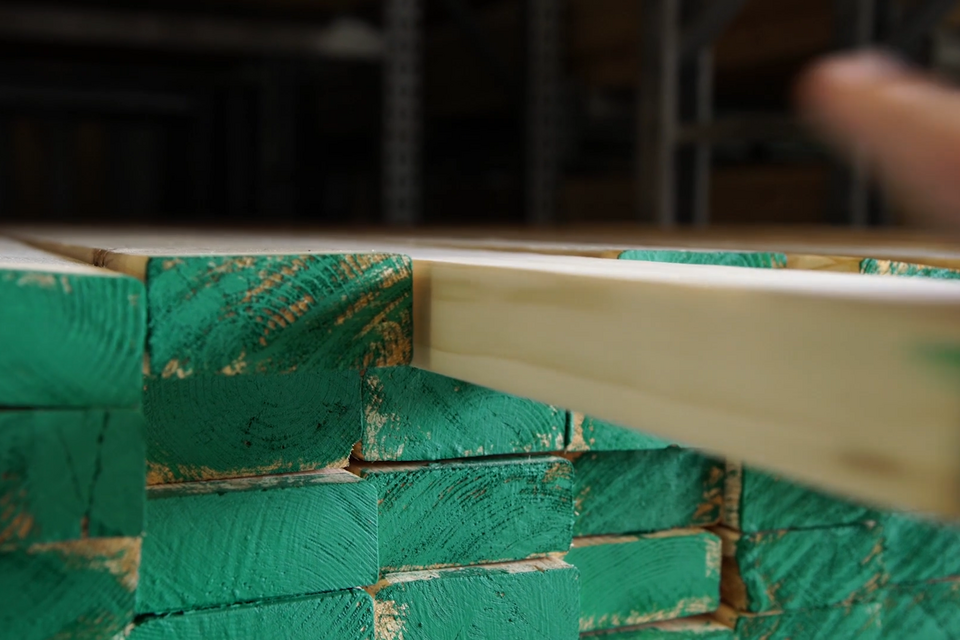As with what seems to be the case with just about every business related to building materials, manufacturers are stuck in a loop of trying to catch-up and keep up with an unusually high demand while Covid19-related interruptions prohibit them from doing so. Unbearably thin staffs, a shortage of raw goods and a lack of sufficient transportation (all coupled with unpredictably strong sales) has created unprecedented backlogs throughout the industry. Lumber is no exception, as the building industry continues to demand more than what can be reasonably produced at this time. As a result, pricing has once again skyrocketed to previous heights, taking the breath out of most buyers (who can’t believe that they are back to the craziness experienced at last year’s epic rally) and forcing everyone in the supply channel to question again whether or not it’s better to pay or not play.
For example, mundane products such as utility-grade strapping and ledger board have become scarce and ridiculously expensive, and so much so that some distributors have chosen to discontinue carrying them for the sake of not paying such exorbitant prices (and on the premise that a market correction is near). Bully for them, but dropping these items from their stock only makes matters worse for the whole market, as dealers scramble to grab anything that is available and gladly pay whatever price that is handed to them...further jacking up the market price. Global commerce is at such a frenetic pace that there aren’t enough empty containers available to ship products overseas. Some sources report that they have in excess of 30-60 days’ worth of goods parked in foreign warehouses, awaiting an available container so that they can be loaded and shipped. What makes it worse for our industry (and speaking in terms of all methods of transportation), perishables take precedence over non-perishables so lead times on many building materials are steadily growing. As shortages become more intense, buyers will scavenge for all that they can get their hands on and typically buy more than what they may need in anticipation of outages. In the process, they prevent other buyers from getting theirs. It’s a vicious cycle that has transpired to one degree or another since the Covid-19 pandemic hit, but it’s at a fever-pitch now. Lumber pricing has rebounded to within inches of 2020’s painful spike and, as of print, appears to be on track for a new record. However, as we experienced at the last mega-rally, our industry seems to only take so much before they set aside their projects and purchase order books and wait for prices to come back down from the stratosphere. As of print, it remains to be seen when (and if) that behavior will be forming again but, based upon positive U.S. housing starts and futures reports, we may have to wait a bit. For February, we anticipate prices to firm and trend upward during this volatile market, but we would like to make it abundantly clear that, thanks to the strong relationships we have with our suppliers and our own ability to organize and prepare, we are well-stocked with very competitively priced material.
We’ve been blessed so far but, given that it’s normally one of the harshest times of the year for weather. We have an obligation to remind everyone about the importance of proper storage and care of building materials on jobsites in order to prevent them from suffering from damage or failure. Although we usually talk about “yarding” (the degrading of exposed lumber due to wind, water and sun) during the summer months, the winter months can be just as bad. It’s critical to make sure that your material stays under cover (so that it is well-protected from the elements) and off of the ground so that it stays clean, dry and well-ventilated. In addition, care must be given to some items after they have been installed, as the wrong technique for clearing snow or ice can damage the product and void the manufacturer’s warranty. For instance, Huber Engineered Woods, the maker of AdvanTech, prohibits the use of solid or liquid salt-type products for ice removal as it can open up the surface of AdvanTech flooring, allowing water to enter the wood pores and become trapped. They recommend the use of sand or specific-brand ice melts, such as Safe Paws or Bare Ground. Conversely, certain decking companies, like TimberTech, advise you to avoid using sand as, under foot, it can grind into the surface of the deck board and mar it. They also recommend the use of plastic-edged shovels to remove snow, as metal shovels (or plastic shovels with metal leading edges) can damage the surface of the decking. Although the above may or may not be obviously known, they are good examples of why it is always important to get familiar with the manufacturer’s recommendations for installation and care of their products as, with the expense of building materials and the lack of your time to deal with call backs, who can really afford not to?
The internet is a wonderful thing for anyone who needs help with a product, but our Vertical Product Specialists are even better as they have many years of experience with the products we sell here on Cape Cod. They are indeed the local experts who can and will help you with your particular situation. If you need assistance, we encourage you to reach out to us for help as we want you to be successful with your job and realize that the real shortage you face now is time. We can help you with that by doing our part in steering you clear of some not-so-obvious troublesome issues. Thank you for your business!
